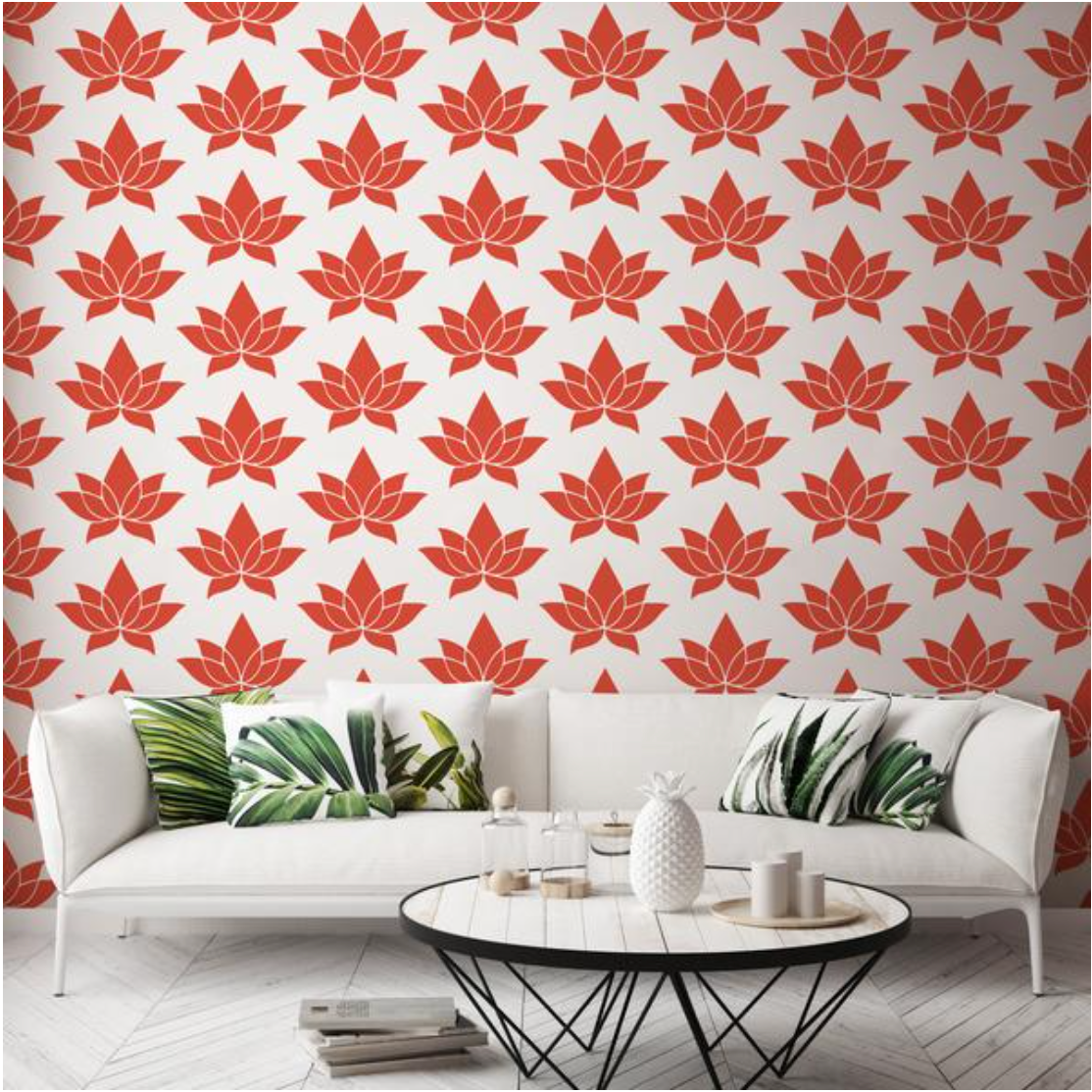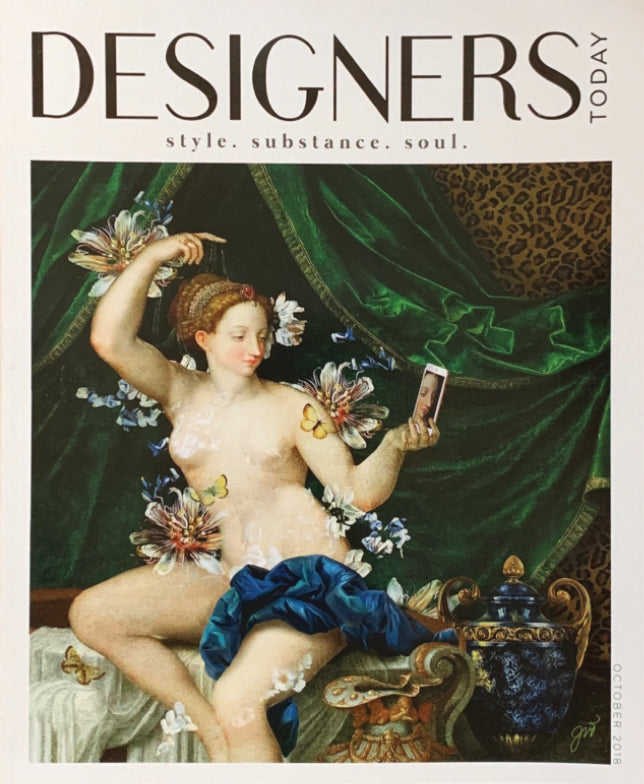Elements of Design: Everything You Need To Know
Design is a lot more than just choosing pretty colors or comfy furniture.
Great design involves a deep understanding of seven important elements: space, line, form, light, texture, color, and pattern.
As much as we're all familiar with these terms, how they influence interior design is where the difference comes in.
So, let's break down each of these elements of design, so you can understand how to use them on your next interior décor adventure.
What Are the Elements of Design?
Interior design is a science and art rolled into one, and it revolves around these seven core elements and principles of design:
Space
Space is the 'canvas' on which we design. It includes both the physical area you have to work with and the perceived space around the objects placed. Efficient use of space makes a room feel spacious, inviting, and clutter-free.
Interior Design Tips:
- Use large mirrors or reflective surfaces to make a small space feel more expansive.
- In wide open spaces, define separate "zones" using area rugs and grouping furniture.
- Use floating shelves to utilize vertical space for storage and display.
Form
Form pertains to the shape of different objects in your room. Combining different shapes creates a sense of contrast and visual interest.
A combination of geometric (sharp edges) and natural (often irregular) forms can bring a unique sense of balance to a room. For instance, pairing a spherical lamp with a rectangular table can make it look visually appealing.
Interior Design Tips:
- Round organic coffee tables help soften the edges of modern, boxy sofas.
- Wooden beams or vaulted ceilings create architectural interest and dimension.
- Utilize a mixture of furniture shapes - pair curved accent chairs with a linear sofa.
Line
Lines are everywhere — in the architecture, furnishings, and décor. Being the visual guides in a room, they contribute to its overall feel and direct the visual movement.
Horizontal lines provide a sense of stability, vertical lines offer a feeling of strength and elevation, while dynamic lines, like zigzags or diagonals, bring energy and movement.
Interior Design Tips:
- Highlight architectural lines with extended overhead lighting or floor lamps.
- Bring flow and movement using drapes or patterned area rugs with dynamic lines.
- Contrast vertical and horizontal lines with your layout for visual tension
Light
A combination of natural and artificial light sources can create different moods at different times of the day.
Light intensity, its direction, and color all affect how a space is perceived, and how we see different colors and textures.
Interior Design Tips:
- Position lamps and sconces to cast light upwards and bathe the walls in a warm glow.
- Replace harsh white bulbs with softer ones like amber or daylight bulbs.
- Incorporate dimmer switches to adjust brightness for different times of day.
Color
Beyond making things look appealing, colors serve a greater purpose, impacting the overall mood of the room.
Soft blues and greens often make a room feel soothing, while intense hues like red induce feelings of energy and passion. Neutral colors like white, gray, or black can serve as a canvas to make other colors pop.
Interior Design Tips:
- Use darker paint colors to make a small space feel cozy rather than closed in.
- Add pops of accent colors in pillows, throws, and colorful wallpaper.
- Coordinate metals and wood tones with your color scheme so they enhance rather than compete.
Texture
Texture is about the feel or appearance of surfaces. They can either be tactile (how they physically feel), or visual (how it's perceived to feel).
A wooden coffee table brings a rustic charm (rough texture) — which is different from wallpaper with a wooden-like appearance.
Interior Design Tips:
- Add natural elements like woven baskets, wood surfaces, stone decor and plants.
- Contrast sleek furnishings with nubby throw blankets and rug textures.
- Use wallpaper or decorative paint techniques to introduce visually interesting textures.
Pattern
Patterns work hand-in-hand with color and texture, adding rhythm to interiors through repetition.
They could be geometric, floral, or abstract and can surface in various places, whether it's fabrics, wallpaper, or lighting. Just remember to keep it all harmonious.
Interior Design Tips:
- Repeat patterns in doses - don't overdo it. Use in key focal areas instead of entire rooms.
- Tie in colors from patterned fabrics to solid furniture or accessories to create a unified look.
- Scale patterns appropriately - smaller patterns for small spaces, larger motifs in big rooms.
Using The 7 Design Elements In Interior Decorating
Now that you have a basic understanding of the various principles of interior design, it's time to put that knowledge into practice.
Here are some tips you can use, whether you're a professional interior designer or a homeowner looking to revamp your space.
Emphasize a Focal Point
Every room should have a focal point — an eye-catching area that draws attention and sets the tone.
It could be a stunning piece of artwork, a bold wallpaper, or an elegant chandelier. Design the rest of the room to complement this focal point.
Mitchell Black's unique wallpapers and wall murals offer stunning centerpieces for any room.
Mix and Match Textures
Incorporate multiple textures to create visual interest and depth in your space. Combine smooth surfaces with rough finishes or pair soft furnishings with polished accessories.
Stick to a Color Palette
Choose a color palette that aligns with the mood you wish to create in the room.
Stick to a few complementary colors and use them throughout the space for a cohesive look. You can also add pops of contrasting colors for a visual surprise.
Style with Scale in Mind
Remember to choose furniture and décor that are in proportion with the size of the room.
A large room can handle larger furnishings, while something too big for a small space will make it feel cramped.
Create Balance
Balance is important in interior design, whether it's through the use of symmetrical or asymmetrical arrangements.
For example, try to use a mix of shapes, colors, and textures that create a sense of harmony in the space.
Layer Lighting Sources
When designing, consider different sources, whether it's a soft, ambient light source for reading or brighter, task-oriented light sources in the cooking area.
Use natural light where possible and have dimmers or multiple lighting fixtures to adjust the brightness as needed.
Don't Rush the Process
Take your time while decorating. When you find a piece you love or have a brilliant idea, incorporate it into your design plan.
The best results often come from a thoughtful approach and allowing the space to evolve naturally.
Step Into a World of Stylish Interiors With Mitchell Black
Interior design is so much more than making a room look good. At Mitchell Black, we believe it's about injecting creativity into a space, making it not only look fabulous but flow seamlessly.
With our unique wallpapers, artistic murals, and exclusive collaborations, we aspire to breathe life into each key element of interior design.
Let us help you transform any room into a haven of style and comfort with our expert guidance and impeccable products.
Visit our website today for more information.







Leave a comment